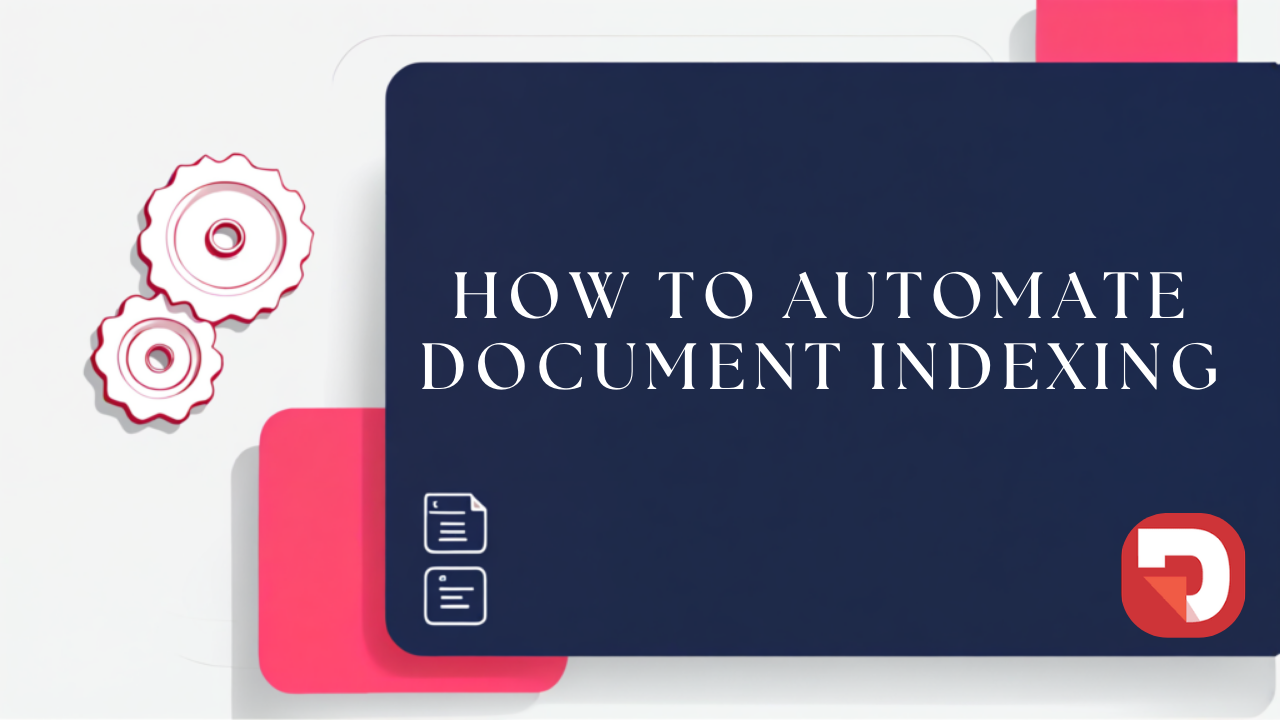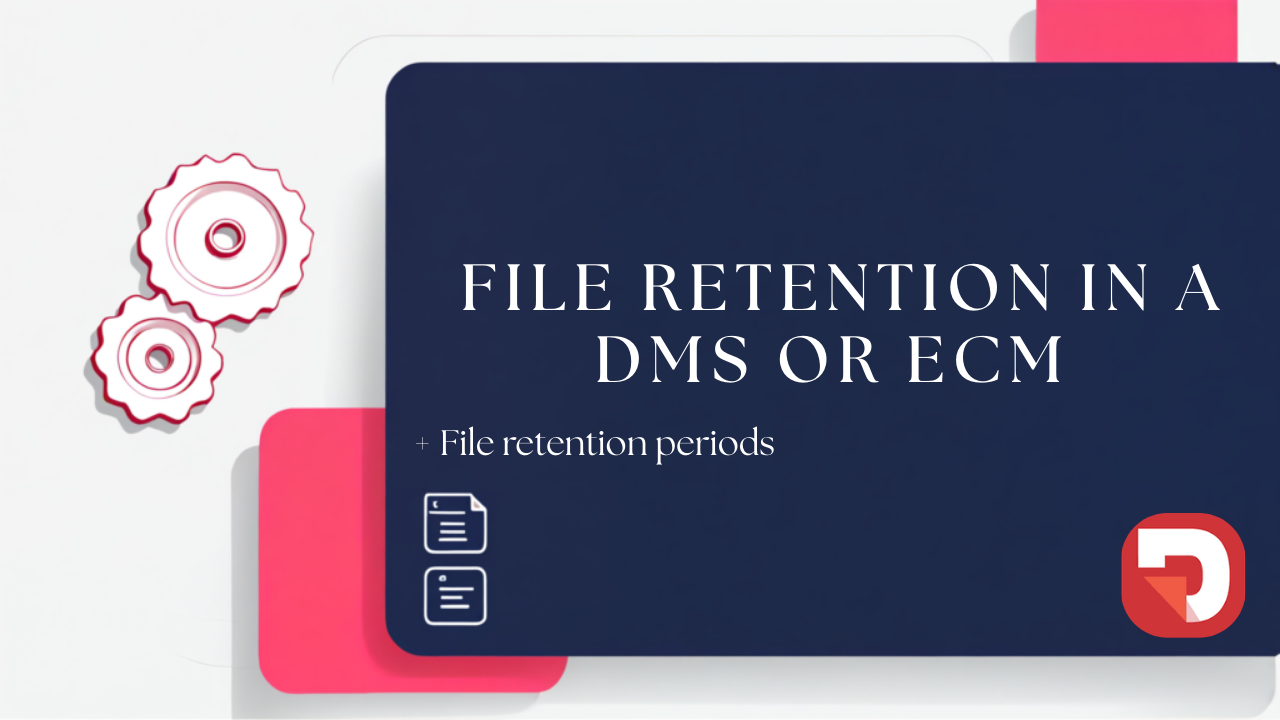
Automated Document Indexing: How to Find Any File in Seconds

One of the biggest challenges when managing sensitive documents is not running into any security risks.
But how can you do this?
Simple. Set up a solid file retention policy and workflow in your document management system.
File retention is the process in which you store and manage business records during their lifecycle. Including creation, distribution, storage, and archiving.
This process allows you to access your documents for operational use, legal compliance, and historical reference until their disposal or destruction.
Examples of records kept in file retention could include employee files, tax records, patient charts, contracts, invoices, and so much more. As you can imagine, most of these documents are sensitive and need to meet certain regulations such as HIPAA, GDPR, or SOX, or others, depending on your country.
To keep in compliance with security regulations, you document should be stored between 3-7 years, depending on their nature.
So to set up your file retention policy, it is crucial that you understand the nature of your documents.
Let’s break it down a bit by industry:
| Industry | Retention period |
|---|---|
| General Business | Approximately, 7 years |
| Healthcare records | 7-10 years for patient records 30 years for employment documents |
| Government | Permanently for public records 7 years for personnel files +10 years for litigation records |
| Manufacturing | +3 years for maintenance logs 7-10 years for inspections |
| Real estate | Permanently for deeds and titles 7-10 years for agreements and inspection reports |
Retention policies dictate how long different types of documents should be kept and when they should be destroyed or archived.
These policies help organizations stay compliant with federal, state, and industry regulations while reducing storage costs and minimizing legal risks.
A well-crafted retention policy outlines timeframes for each document category, identifies responsible departments, and defines secure methods for disposition. Importantly, these policies also reduce the risk of over-retention, which can lead to unnecessary liability or security issues.
You can also automate your retention policies, but let’s not get ahead of ourselves just yet.
Record retentions won’t look the same across all industries (or documents, for that matter).
It is important to be well acquainted with regulations surrounding your industry and the type of files and documents that you will be handling.
Let’s use 5 industries as an example.
1. Manufacturing
Manufacturers are responsible for maintaining extensive documentation to meet product liability standards and quality assurance benchmarks.
Regulatory bodies like the FDA, OSHA, and ISO require long-term retention of production records, test results, and environmental safety reports. Retention timelines often depend on the lifespan of the product or equipment and may extend several years beyond.
2. Healthcare
In the healthcare sector, the retention of patient records, billing data, and compliance documentation is critical to regulatory adherence.
HIPAA establishes federal minimums, but state laws can vary, especially regarding minors, for example, while adult patient records are stored for around 10 years, minors’ records should be destroyed 10 years after their 18th birthday, or in the UK, adult records are kept for 8 years, while pedriatric records must be stored until the patient’s 25th birthday.
Bear in mind that this regulation varies between countries, or states in the U.S.
Healthcare providers must also consider litigation risks, audit readiness, and medical best practices when setting retention schedules.
3. Accounting and finance
Accounting departments must retain financial and tax-related documents to comply with IRS guidelines and accounting standards such as GAAP and SOX.
The focus here is on auditability, legal defensibility, and transparency.
Some financial records, especially those related to audits and statements, are usually retained permanently, while others, like payroll or tax filings, follow strict multi-year requirements.
4. Government and public sector
Government entities face some of the strictest document retention requirements due to their obligation to provide transparency and maintain public trust.
Many documents, such as ordinances and meeting minutes, are kept permanently. Compliance with FOIA and other public access laws requires careful documentation, consistent policy enforcement, and long-term digital archiving.
5. Real Estate
Real estate professionals and property managers handle documents related to contracts, leases, inspections, and compliance disclosures.
These records often have legal implications, so retention policies must reflect both contractual obligations and regulatory standards set by HUD, FHA, or state housing authorities.
Some records, such as deeds and titles, require permanent storage.
There are some tips you can follow when setting up your file retention policies:
As we have previously mentioned, each document and industry requires different storage timelines and regulations, so keeping track of each one manually can be time-consuming and prone to error.
However, with a Document Management System (DMS) or an Enterprise Content Management (ECM) platform, you can set up automated retention workflows that take care of your document lifecycle from start to finish.
These workflows ensure that records are either securely deleted or archived after their designated retention period, without you having to take the time to sift through endless files.
This helps your organization stay compliant, reduce liability, and maintain an organized, clutter-free digital environment.
Normally, workflows will work based on triggers. Once an action has been delivered, the workflow will continue to move through other phases.
With Dokmee you can build workflows in 2 different ways:
This will allow you to build your workflow by connecting nodes that represent different tasks of operations.
This method uses a drag + drop interface that can be linked together to define the flow of your document.
Traditional workflow construction uses AND/OR statements that require programming knowledge.
This method will allow you to build much more precise workflows based on boolean conditions.
Let’s take a look at 2 examples of automated workflows:
Let’s say your accounting department processes annual tax documents, including tax returns and supporting schedules.
According to IRS guidelines, these must be retained for a minimum of 7 years. In Dokmee, a retention rule can be created specifically for the “Tax Documents” folder or tag category.
Here’s how the workflow works:
This workflow ensures that no outdated, sensitive financial data lingers in the system longer than necessary, which reduces legal exposure and storage costs.
If the IRS ever audits your organization, you’ll have a fully traceable log showing your compliance with retention requirements.
Now consider a healthcare clinic that manages thousands of patient medical records.
While patient records for adults typically need to be kept for 7–10 years after the last treatment, long-term access may still be needed for medical history reviews or legal documentation.
Instead of deleting them, the organization opts to archive them after the active retention period.
Here’s how the archiving workflow is set up in Dokmee:
In this case, the archived records are stored in a secure, read-only format to preserve integrity, while remaining accessible when legally or clinically necessary.
This ensures HIPAA compliance and supports continuity of care without cluttering active folders.
Dokmee’s file retention features guarantee that your documents are securely stored, managed, and deleted at all times.
With Dokmee’s automated retention tools, workflows like these can be created with custom metadata triggers, scheduled reviews, and secure final actions.
Whether your documents need to be deleted for legal risk mitigation or archived for historical access, automation ensures the process is consistent, compliant, and effortless.
You can also contact the Dokmee support team for a more intricate workflow with advanced file retention and triggers.
Schedule Your Free Demo—Anytime, Anywhere
Experience enterprise-grade ECM with zero hidden fees and instant ROI:
“Dokmee cut our retrieval time by 70%—we saw ROI in 45 days.”
Chad P., CTO